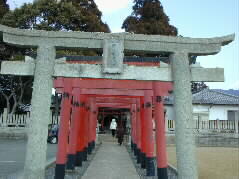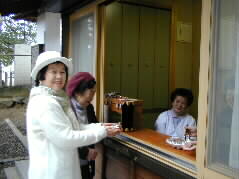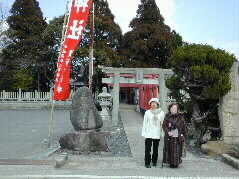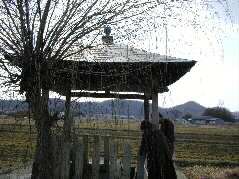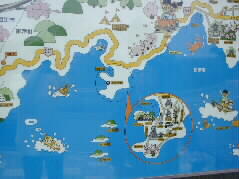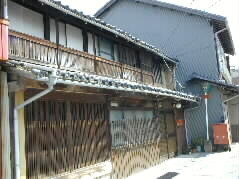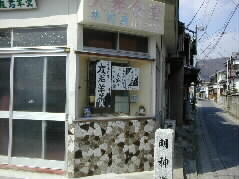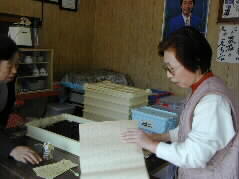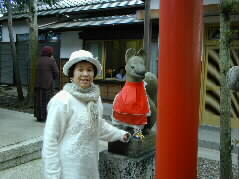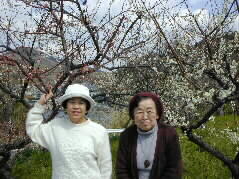|
March 13: Spring sea, by Mie
|
|
The memorial service on the 49th anniversary of my father's death was over and children went back to Kochi, Hokkaido, Tokyo, Chiba, and Yamaguchi respectively. We will also return Oita by a ferryboat tonight.
As it was hard for us to stay in home on a day like this, we have decided to drive around. Soon after we passed through narrow streets of Tatsuno, we came up to a Inari shrine (the god Inari (originally a god of harvests, later worshipped as the guardian deity of an area.) |
| Although we happened to come here, today is Hatsu-uma day - one of the memorial anniversaries of harvest -. We were welcomed by Red-rice, a symbol of happiness. As we feel lonely after seeing-off my father, I hope something good will take place for us. | |
| Two lovely stone monuments of fox with red bibs sit on both side of the Torii gate in order to protect the shrine from devils. I took a picture in spite of myself. |
The shrine sits in the rice field surrounded with the grove of the village shrine.
The shrine, Hourida, has been famous for its effectiveness of thriving business since old days. I first visited here, however. | |
| Close to the shrine is a small pond called "Clear well of Koyanagi." The place was called "The land of rich water" in the days of Harima Fudoki (records of the culture and geography of Harima province), and was selected as one of the famous welling-points in Muromachi era, they say. |
| When we drive down to the next destination, my husband suddenly shouted saying the car's distance meter hit 100,000 Km record. My lovely car runs well. |  |
|
We passed Aioi city and entered Mitsu town through a winding road along the beautiful coast. The line is called "seven curves", meaning no straight line in the road.
We continued to drive to Murotsu village. |
| We took a rest at Kashiwa park for a while viewing Murotsu in the front. Karani Island, introduced in Manyou Poem, sits still nearby. | |
|
Murotsu is a natural good port since old days. Many old houses still remain in the village. On the right is a shop selling famous Tomogimi Youkan, or a bar of sweet jellied adzuki-bean paste. |
|
The paste dates back to 1207 when a prostitute named Tomogimi (former wife of Yoshinaka Kiso, a Samurai worrier) happened to hear a sermon by Hounen (a holy priest who was purged to Sanuki province) and entered the Buddhist priesthood and finally died in peace. Each of the paste is handmade in shape of a boat with simple taste. A seller on the right hand downs the taste. |
| Murotsu has been famous for its Ume tree since old days. The tree releases the fragrance around the park. |
